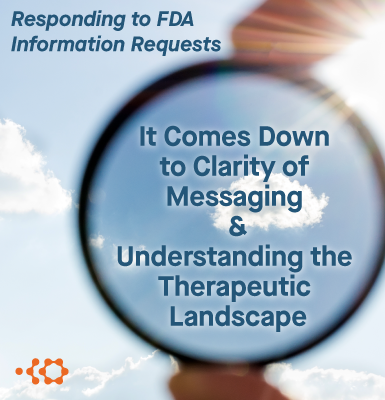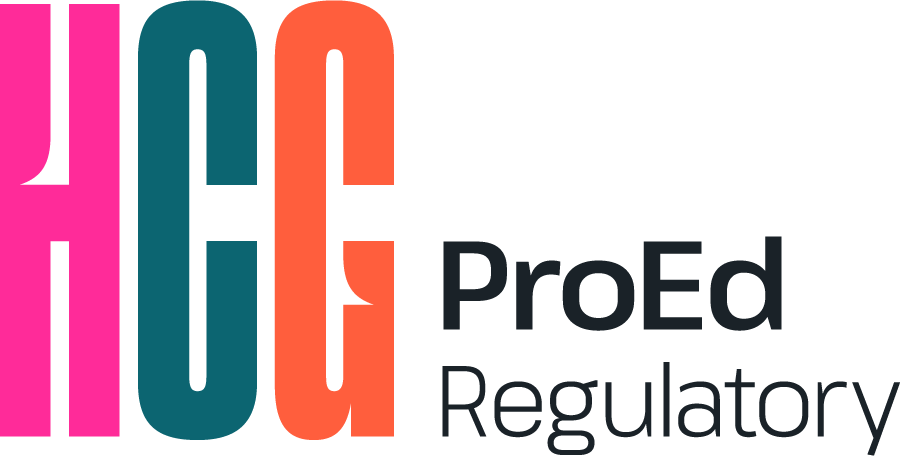Responding to FDA Information Requests: It Comes Down to Clarity of Messaging and Understanding the Therapeutic Landscape

No matter how well you have prepared your New Drug Application (NDA) or Biologic License Agreement (BLA) submission for the FDA, questions posed regarding the development of your product will arise. These are presented in the form of Information Requests (IRs) and Discipline Review Letters (DRLs). The FDA Guidance to Industry from the Center for Biologics Evaluation and Research (CBER) and the Center for Drug Evaluation and Research (CDER) outlines how the FDA uses these communications to obtain clarifying information to assist in reviewing submissions. Well-crafted responses to IRs and DRLs are critical in replying to regulators and keeping the review of your application on track.
While both IRs and DRLs were developed to improve FDA predictability and transparency and to minimize the review cycles necessary for approval, they are different. IRs require a specific response to clarify content or provide additional information for the submission under review and may be issued at any time in the review of an NDA, ANDA, or BLA. DRLs identify possible deficiencies in a specific section of an application (pharmacology, CMC, etc) and may be sent to the applicant at the completion of the review of that section. Both IRs and DRLs are initial thoughts on possible deficiencies found during the review; they may or may not ultimately lead to approvability concerns, or they may signal changes in FDA thinking about the areas where they issue requests.
IRs and DRLs in and of themselves don’t throw off the application timeline. In fact, the FDA Standard Operating Procedure and Policy (SOPP) clearly states that the review clock does not stop upon issuance of an IR or DRL and that the review of the application will continue while sponsor response is pending. Sometimes the nature of the IR or DRL may contribute to delay; a request that is substantial or necessitates a submission amendment can extend the review clock. However, it is a sponsor’s ability to efficiently process and understand the request, craft a clear response, and reply through the agency portal that can minimize or avoid delay.
How do you stay ahead of these requests and manage your time effectively? The short answer is be proactive and don’t fear the unknown. Sponsors commonly address IR and DRL requests as they arise, keeping the submission timeline moving alongside the uncertainty around possible FDA inquiries; however, we recommend starting earlier. Most issues will have been identified before submission, and your team can begin to develop a list of potential deficiencies, and appropriate responses, during the preparation of your IND updates or during the publishing of your submission. You’d be surprised at what you recognize as potential challenges at this early stage that will eventually be reflected in FDA requests. As you develop a response library you must think critically about what you have done, how you can defend that, and how the therapeutic landscape is evolving. Question bank and response library development can be leveraged for both IRs and DRLs, and are useful tools to have at the ready in anticipation of potential reviewer requests and for milestone meetings with the FDA.
How should you structure your response?
- Lead and end your response with the headline message,
- Keep your response simple,
- Ask for clarity from regulatory project managers,
- Use a Q&A bank to focus answers and respond quickly
Take for example Incyte and its candidate product ruxolitinib for the treatment atopic dermatitis through JAK1/JAK2 inhibition. The FDA issued an IR, but it was determined that the response and additional information submitted constituted a major amendment to the NDA resulting in a 3-month extended review period. Trading of corporate stock dipped about 6% even though the application was granted priority review (Incyte Sees Delay in FDA Review of Eczema Cream – TheStreet; June 11, 2021). Pfizer’s JAK inhibitor, abrocitinib, experienced a similar delay. Proactive response development around questions related to the safe use of JAK inhibitors and other key issues could have potentially helped to mitigate these delays.
So, you can see that IRs can be costly, but it is provocative to think that if those sponsors had developed a question response library, better decisions could have been made before submission and quite possibly allowed the sponsor to define the safe use of JAK inhibitors in dermatitis and to proactively defend these findings and other challenges in this class of drugs.
 Jeffrey Mocny, PhD, is a product strategy and development leader who leverages his experience in quality management, strategic planning, IND and NDA guidance, and risk mitigation to guide regulatory projects from conceptualization to completion in the analytical, medical device, biotechnology, nutraceutical, and pharmaceutical sectors. Jeff provides a consultative approach to sponsor relations, devises strategic roadmaps that follow best practices, and spearheads collaborative problem resolution. Connect with Jeff on LinkedIn.
Jeffrey Mocny, PhD, is a product strategy and development leader who leverages his experience in quality management, strategic planning, IND and NDA guidance, and risk mitigation to guide regulatory projects from conceptualization to completion in the analytical, medical device, biotechnology, nutraceutical, and pharmaceutical sectors. Jeff provides a consultative approach to sponsor relations, devises strategic roadmaps that follow best practices, and spearheads collaborative problem resolution. Connect with Jeff on LinkedIn.
